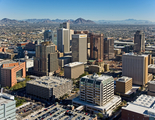How Long Do Solar Panels Last?

One of the most common questions is: ‘how long do solar panels last?’
As always with questions like these, the answer to how long solar panels last may be a little complicated depending on a variety of factors which we will discuss here.
The short answer? A really long time!
In general most manufacturer’s warranties consider the life of the panel finished when it degrades to 80% of its original output. This doesn’t mean that the panel stops working, however – some newer technologies running at 50% might still outperform an older installation at 80%.Average Degradation rate: the mean average degradation rate for solar panels is 0.8% per year (25 years to 80%).
NREL
Average Degradation Rates
According to a Photovoltaic Degradation Rates Study published by the National Renewable Energy Laboratory (NREL), the mean average degradation rate for solar panels is 0.8% per year (25 years to 80%), with the median falling to 0.5%, and 78% of all installations examined showing less than 1%. That said, these are averages and there are a number of factors that can change this figure, such as the technology.
Solar Panel Lifespan depends on Panel Type
With newer technologies that have not been around long – Copper Indium Gallium Selenide (CIGS) and Cadmium Telluride (CdTe), it is hard to draw definite conclusions. There are examples of both showing wild variance in how fast they degrade, with some showing either no degradation at all (or in one case, an improvement!), and others showing a decrease of as much as 10% in just five and a half years. However Silicon panels have been around for a much longer time and currently make up the majority of the panels in service, therefore we have a much better idea of what affects them.
What Causes Degradation?
The local climate is by far the biggest factor in silicon-based solar panel lifespan. High temperatures, rapid temperature cycling and high relative humidity all have an effect, though the exact effect changes depending on the technology used.
#1 High Temperatures

Sustained high temperatures can cause problems in the chemical components – despite what you might expect, hotter is not better! For every increase of 10°C(18°F), the rate of degradation in the chemical parts is doubled.
#2 Rapid Temperature Changes

Temperature cycling, or repeating rapid changes in temperature, physically stresses the materials making up the panel. This is usually seen in places like deserts, where the days are blisteringly hot, and the nights are very cold. As the parts of the panel expand and contract with the temperature changes, they fatigue, exacerbating any manufacturing defects and wearing out seals. In some cases these changes in size can be severe enough to let moisture past the seals, even if the seals themselves are still good. A lot depends on the design and quality of the panel.
#3 High Relative Humidity

Relative humidity is a measure of how much moisture is in the air. Warm regions with a lot of rainfall are likely to be more humid, as are areas near large bodies of water. Moisture can cause problems for a variety of reasons, from causing corrosion in ferrous components and wiring to causing condensation and fogging inside the panel, directly affecting its efficiency. Solar panels are sealed against moisture, but no seal is perfect and over time they are likely to fail – especially with dramatic temperature cycling.
The Effects of Climate
We can get a good idea of how different climates affect solar panels by looking at a recent study published in the journal “Energy Policy”. The study compares the degradation rate of different types of silicon panel in four different climates in the US:
- Humid subtropical;
- Humid continental;
- Desert; and
- Maritime.
They found that crystalline silicon panels, whether mono- or poly-, behave identically to each other in all climates. However, there is a dramatic difference when you compare them to amorphous silicon panels. Even if you’re looking at investing in a different technology, this is a good illustration of just how much the environment can do to your solar panels.
#1 Humid Subtropical Climate (Atlanta, GA)

Crystalline silicon panels in the region around Atlanta show an average degradation rate of around 0.7% per year, compared to 1.33% for amorphous panels. This gives a theoretical lifespan of 28 years for crystalline panels, but only 15 years for amorphous panels.
#2 Humid Continental Climate (Boston, MA)

In regions with a climate like Boston, crystalline panels degrade at an average of 0.89% per year, or roughly 22 years. As you can see, this is already a big change from the rate in Atlanta.
There aren’t any figures available for the amorphous panels here. This is probably because they’re designed for hotter climates, and aren’t the best choice in the region around Boston.
#3 Desert Climate (Phoenix, AZ)

In the area around Phoenix, crystalline panels suffer a degradation rate of around 1.08% per year (a little over 18 years), with the rate for amorphous panels hitting 1.34% per year (just under 15 years). You can see the effects of sustained high temperatures here, alongside the dramatic temperature change between night and day taking its toll.
#4 Maritime Climate (Portland, OR)

Portland’s maritime climate gives crystalline panels an average degradation rate of 0.56% per year, and a lifespan of nearly 36 years. In comparison, amorphous panels display an average rate of 1.59% per year – only 12-13 years. This stark difference is probably due to how well the different technologies deal with moisture and salt corrosion.
Other Factors
Aside from issues of temperature and humidity, you should consider factors such as seasonal high winds or heavy snowfall when selecting your panels. Largely, though, these can be accounted for in the design and mounting of the whole system, rather than just the panels.
Conclusion
There is a lot to consider when making a decision about investing in solar power, and whilst you can base your decision on the manufacturer’s warranty, there is more to it than that. Your environment is hugely important to the performance of your panel, beyond factors like the amount of sunshine you get. By selecting the right panel for your region, your investment will serve you far better in the long run.
